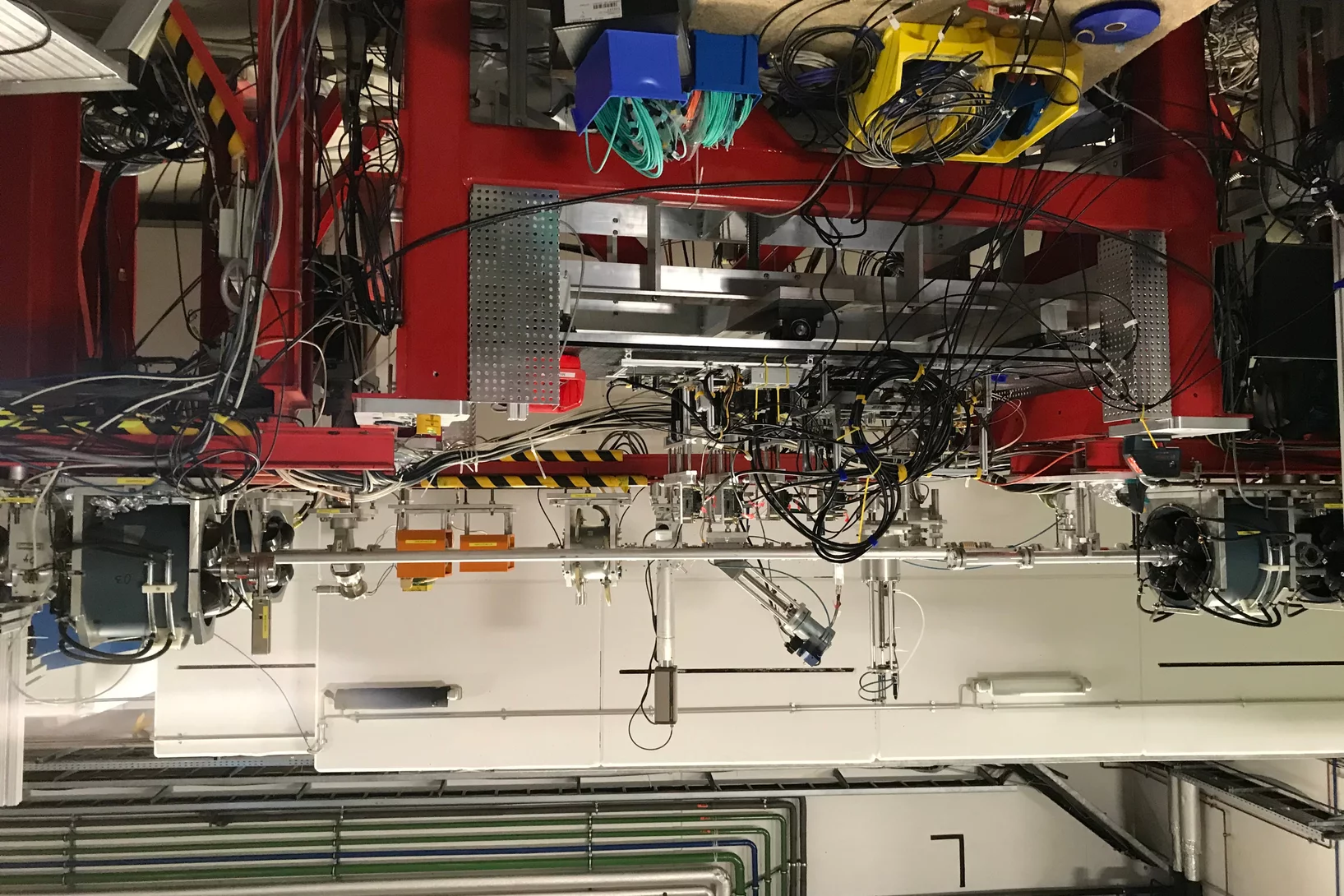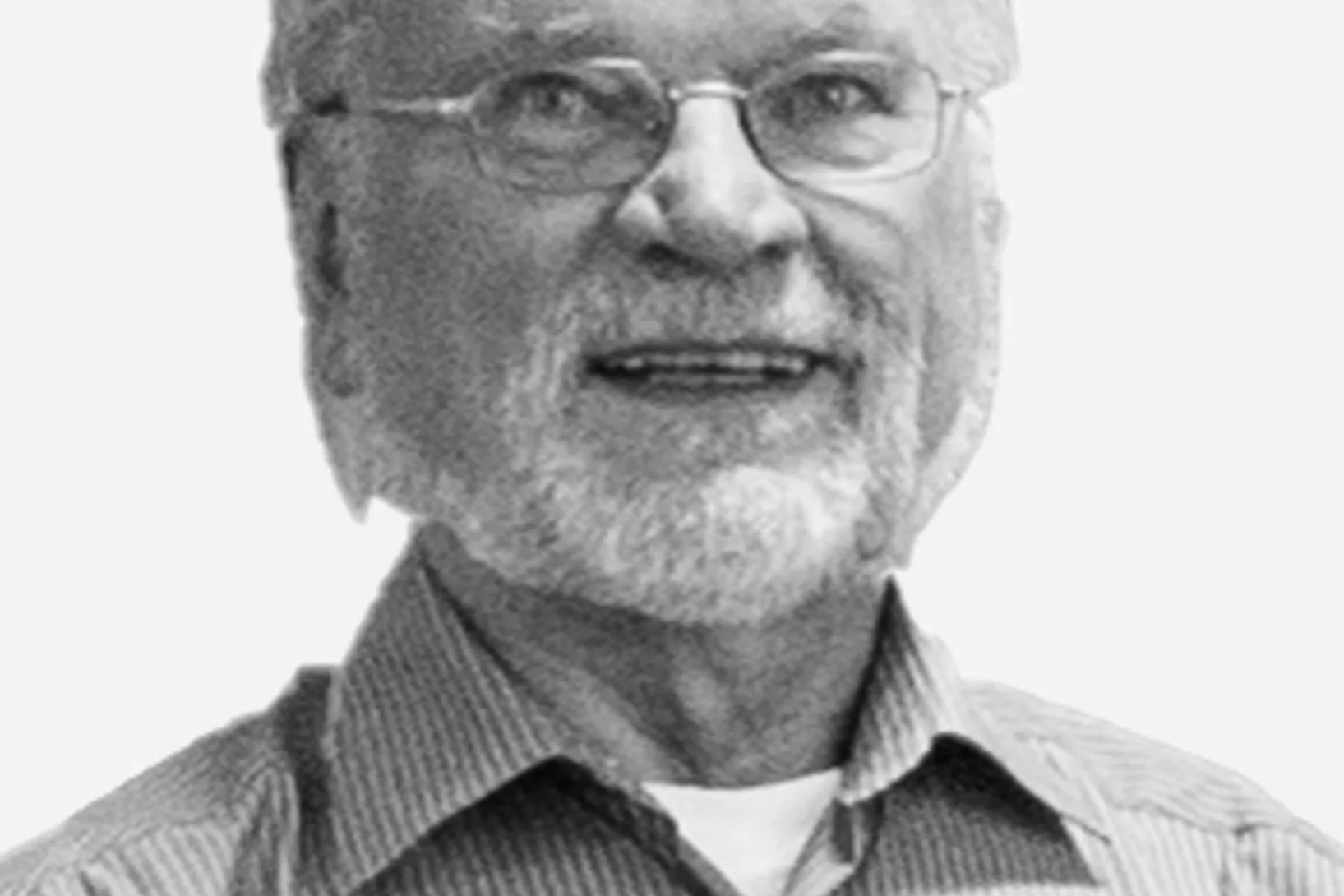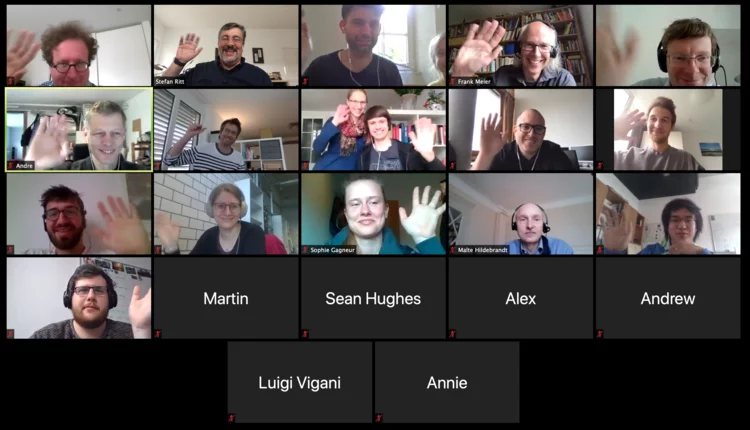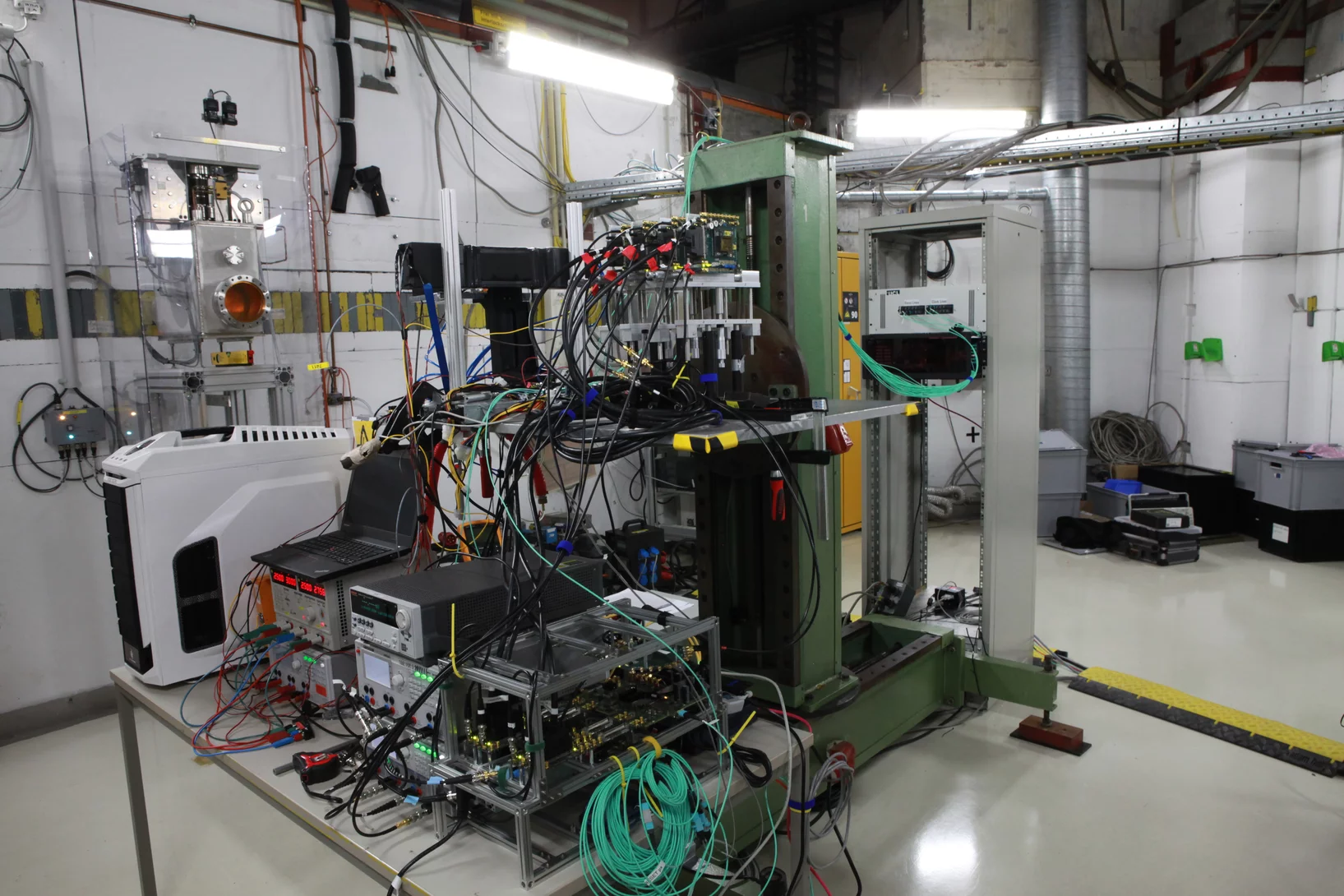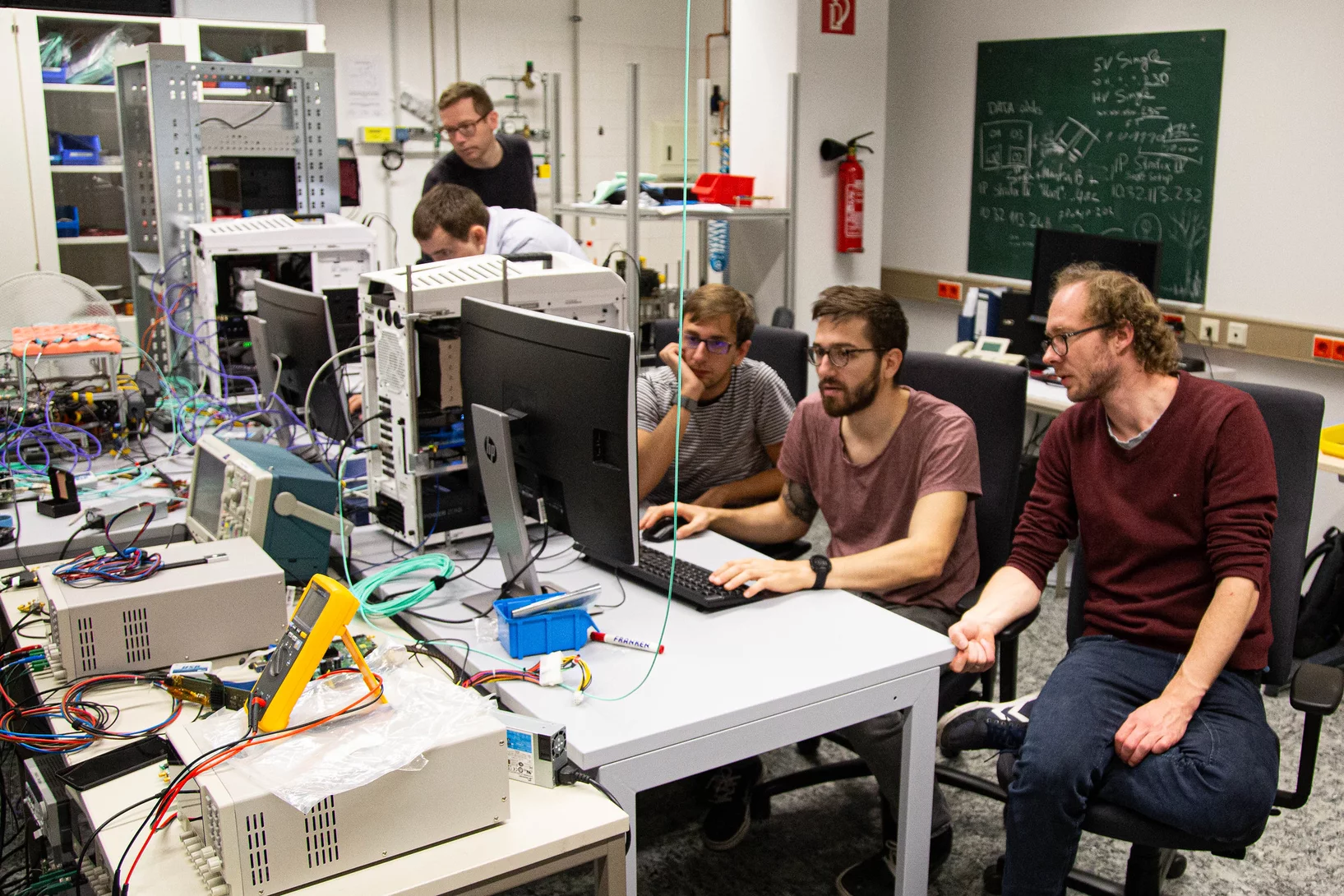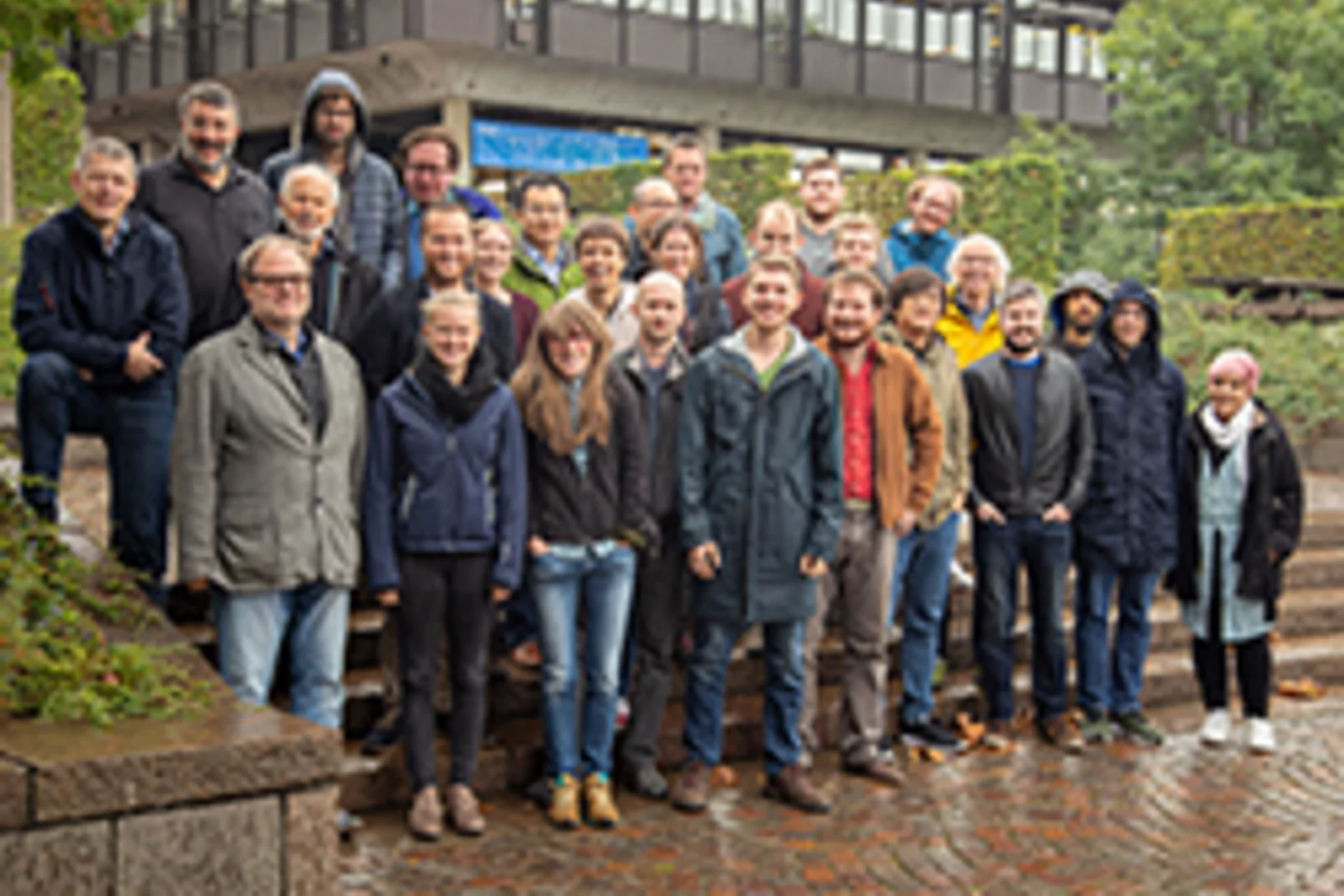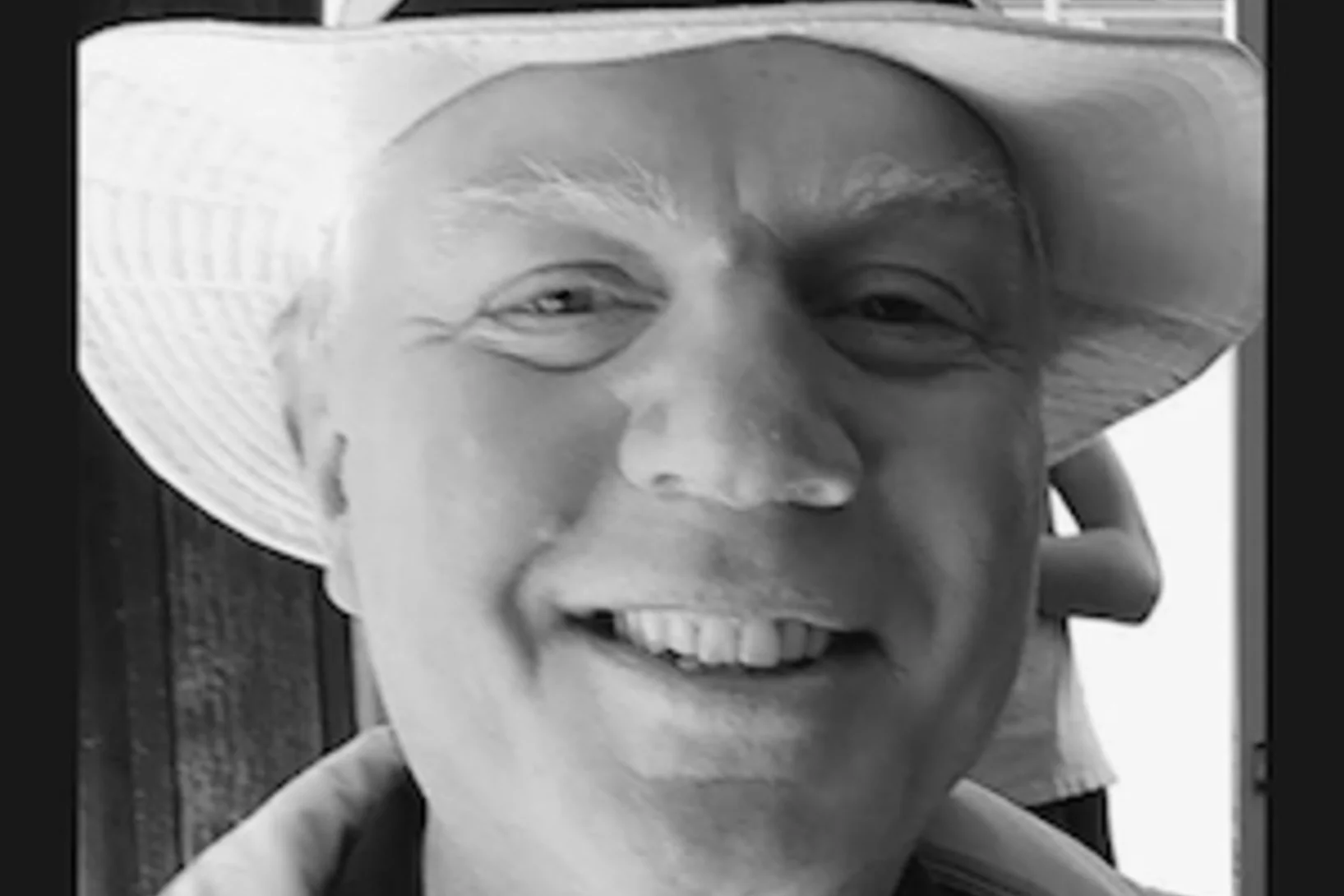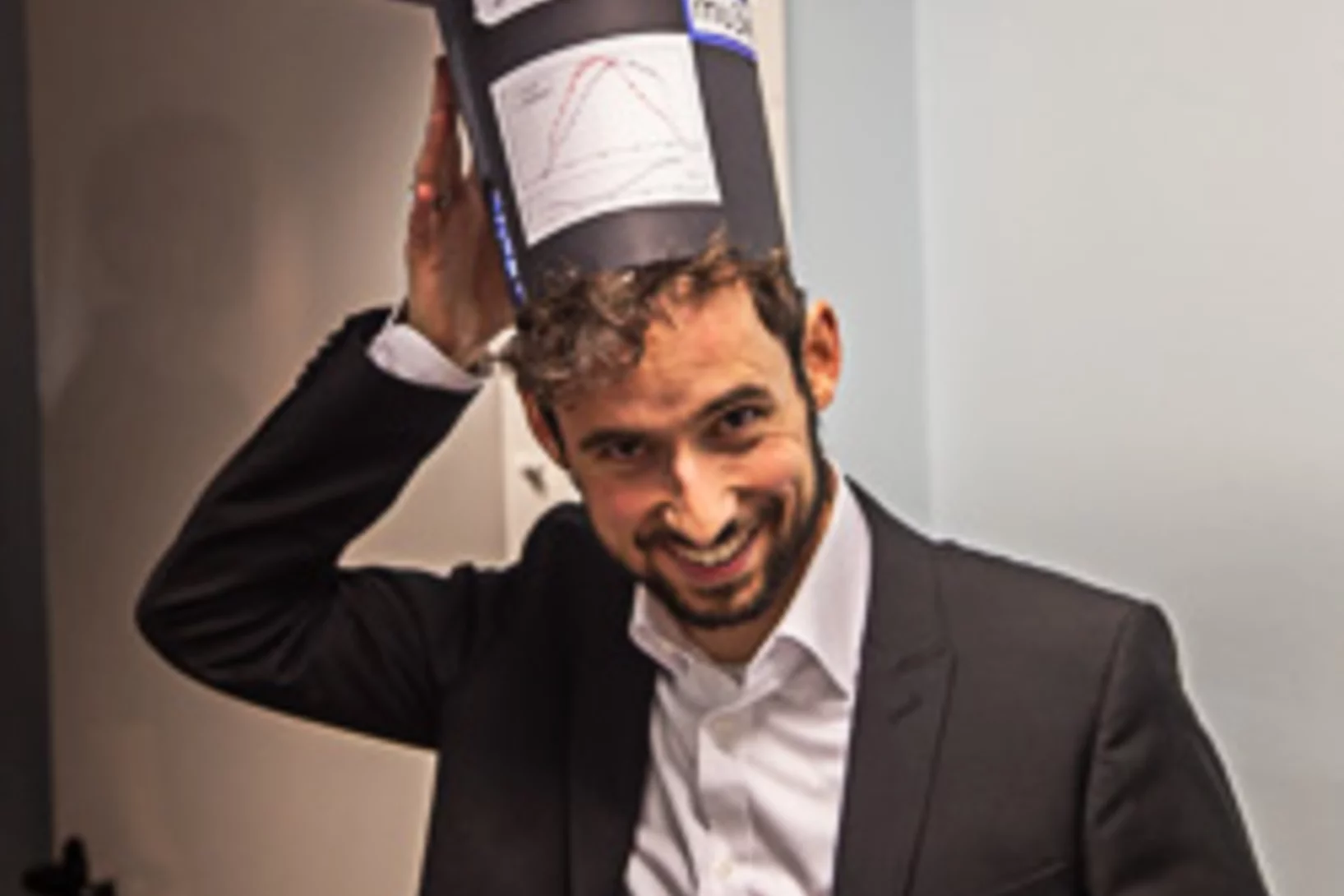Beam test of the data acquisition in Mainz
Resuming beam operations, we have the opportunity to test a part of the data acquisiston sytem using the electron beam at the Mainz Microtron. We operate four pixel planes via two different front-end board prototypes to test the synchronization of across the system.
The Mu3e collaboration grieves for Sig Martin
We lost a very good friend and an important consultant for the design and construction of the magnet for our experiment.
Virtual Collaboration Meeting
During the Corona crisis, meetings are only possible online. The Mu3 collaboration met today virtually with more than 20 people from three different countries.
First beam test with all Mu3e subdetectors integrated
During a week of beam tests at DESY, Hamburg, we for the first time took data with the pixel, fibre and tile detectors running in a common data acquisition setup. The lessons learned are key to completion and comissioning of the complete detector readout.
Second Mu3e DAQ Week in Mainz
Data Acquisition experts from all subsystems got together in the Mu3e DAQ lab in Mainz to integrate hardware, firmware and software into a common system. For the first time, we ran the full Mu3e timing and reset system and in general made good progress towards common data taking at high rates.
Collaboration Meeting at University of Zürich
The Mu3e collaboration met for three days at University of Zürich to discuss detector integration, progress in the subsytems and plans for detector commissioning.
Antoaneta Damyanova successfully defends her Ph.D. thesis on the Mu3e SciFi detector
Antoaneta Damyanova developed the scintillating fiber detector from fiber characterization to prototype construction and evaluation, SiPM array perfromance studies, and mechanical integration. She has successfully defended her thesis at Geneva University.
The Mu3e collaboration grieves for Kirk Arndt
We lost a very good friend and wonderful colleague.
Ulrich Hartenstein successfully defends his Ph.D. thesis on track-based alignment of the Mu3e detector
Ulrich Hartenstein developed algorithms for aligning the Mu3e detector using reconstructed particle tracks. Today he successfully defended his thesis at the university of Mainz.
